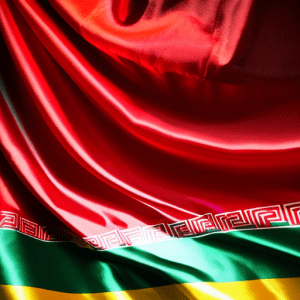Afghan Independence Day, also known as د افغانستان د خپلواکۍ ورځ (Da Afġānistān da Khpalwakey wraz) in Pashto, and روز استقلال افغانستان (Roz-e Isteqlal-e Afġānestān) in Persian, is a significant national holiday that marks the regaining of complete independence from British influence in 1919.
The Historical Journey of Afghan Independence
The route to independence began with the First Anglo-Afghan War (1839–42), where strategic errors led to the defeat of the British forces. However, they returned in the Second Anglo-Afghan War (1878–80), which saw a sequence of a British defeat at Maiwand, followed by their victory at the Battle of Kandahar. This series of events eventually led to Abdur Rahman Khan becoming the new emir and the initiation of friendly British-Afghan relations.
Finally, the Third Anglo-Afghan War in 1919 led the British to relinquish control of Afghanistan’s foreign affairs, marking the complete independence of Afghanistan in 1921.
Celebrating Afghan Independence Day
A nation-wide celebration, Afghan Independence Day involves various activities and events to commemorate the nation’s freedom. The Paghman victory arch, built in 1928 to commemorate independence, is a notable landmark associated with this day.
On the centenary anniversary in 2019, the Afghan flag tricolor was hoisted on several international landmarks, including the world’s tallest building, the Burj Khalifa in Dubai. The day also coincided with the completion of the renovation of the Darul Aman Palace in Kabul, where official celebrations took place.
Frequently Asked Questions
1. When is Afghan Independence Day celebrated? Afghan Independence Day is celebrated annually on 19 August.
2. What is the historical significance of Afghan Independence Day? This day commemorates the Anglo-Afghan Treaty of 1919 and the end of British protectorate status, marking the complete independence of Afghanistan.
3. How is Afghan Independence Day celebrated? Celebrations include hoisting the national flag, official gatherings at landmarks like the Darul Aman Palace, and various cultural events throughout the country.
4. What led to Afghanistan’s independence? Afghanistan’s independence was achieved following the Third Anglo-Afghan War in 1919, leading the British to relinquish control of Afghanistan’s foreign affairs in 1921.
5. What are some significant landmarks associated with Afghan Independence Day? The Paghman victory arch and the Darul Aman Palace in Kabul are two notable landmarks associated with Afghan Independence Day.
In conclusion, Afghan Independence Day is a testament to the nation’s historical struggle for freedom and sovereignty. It is a day of national pride and a celebration of Afghanistan’s rich history, resilience, and cultural heritage.
